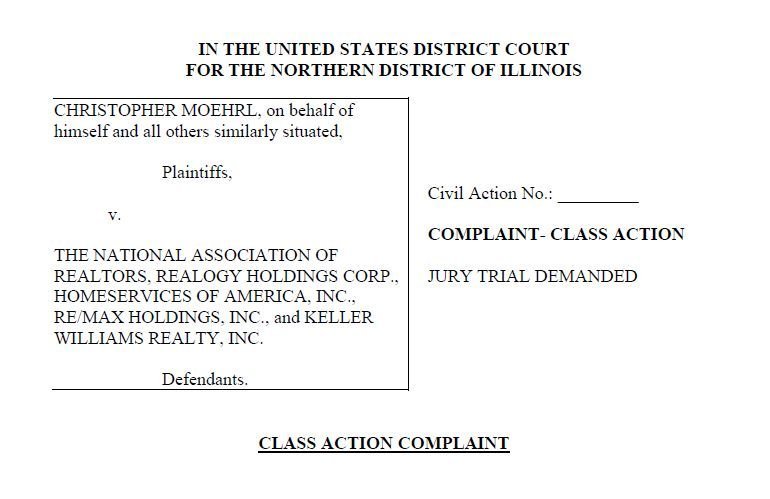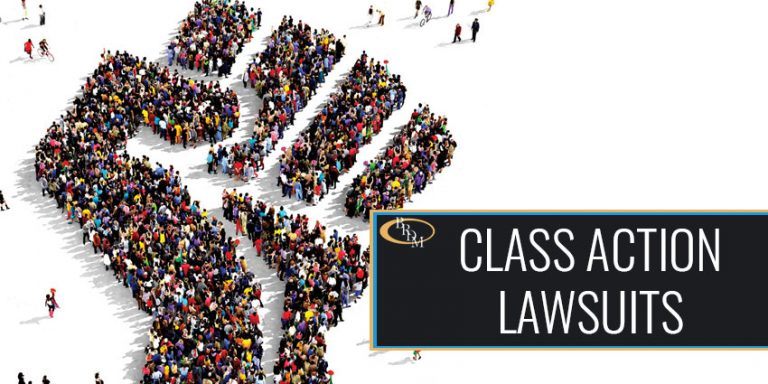Understanding Class Action Suits: A Comprehensive Guide
Course action suits have come to be increasingly common in today's lawful landscape, shaping the way individuals seek justice versus effective corporations. From customer protection to work discrimination, these claims have the potential to bring about significant changes and hold perpetrators answerable. However just what is a course action lawsuit, and just how does it function? In this detailed overview, we will explore the intricacies of course action legal actions, consisting of the kinds of situations that can be pursued, the actions associated with filing a suit, and the benefits and downsides of pursuing cumulative legal activity. Prepare to uncover the internal operations of this fascinating legal phenomenon and get a deeper understanding of how course action lawsuits have shaped our culture.
What Is a Course Action Legal Action?
A class activity lawsuit is a legal action in which a team of individuals jointly brings an insurance claim versus an offender or accuseds for comparable damage or wrongdoing. This sort of claim permits a multitude of people that have suffered a comparable injury to sign up with pressures and go after lawsuit with each other, rather than filing individual suits. Course action legal actions are generally used in situations where the harm or misbehavior influences a big team of individuals, such as item liability instances, environmental air pollution situations, or cases entailing consumer fraud.

In order for a claim to be accredited as a class action, particular needs must be met. These demands usually include numerosity (a a great deal of potential class members), commonness (typical questions of law or fact), typicality (the claims of the representative celebrations are typical of the course), and competence of representation (the rep parties will relatively and appropriately shield the interests of the class) When a class activity lawsuit is accredited, notification is offered to prospective class members, who then have the alternative to join the claim or opt-out if they desire to pursue their very own private cases.
Sorts Of Course Activity Claims
There are numerous categories of course action legal actions that incorporate a broad range of legal issues and sectors. One common kind is customer class actions, which entail claims made by a team of customers against a firm for false advertising and marketing, malfunctioning items, or unjust organization techniques. These legal actions frequently seek settlement for the affected customers and look for to hold the firm responsible for its actions.
One more category is safety and securities class actions, which are brought by financiers versus a business for alleged safeties scams. BioVie class action lawsuit. These legal actions normally entail insurance claims of deceptive declarations or noninclusions in the business's financial statements or disclosures, which triggered the financiers to suffer financial losses
Work class activities are also common, including cases made by a group of staff members against their employer for offenses of labor regulations, such as discrimination, wage and hour infractions, or wrongful termination. These claims look for to secure the legal rights of employees and ensure reasonable treatment in the office.

Steps Associated With Filing a Course Action Legal Action
Class activity suits require a certain set of actions to be adhered to in order to properly launch the lawful process. The initial step is to recognize the potential class members who have comparable insurance claims or complaints against the accused. This includes carrying out extensive research study and celebration proof to sustain the claims. As soon as the course participants are recognized, the following action is to assign a lead plaintiff or course representative who will act upon behalf of the entire class. The lead plaintiff will function carefully with a skilled lawyer that concentrates on class action suits.
After the lead complainant is selected, the following step is to file a problem with the court. The complaint details the allegations against the offender and the alleviation looked for by the course. It is very important to make certain that the complaint satisfies all the lawful needs and clearly specifies the cases of the class participants.
As soon as the complaint is filed, the court will examine it and figure out if it fulfills the essential criteria to proceed as a class action claim. If the court accepts the course qualification, notification will certainly be sent out to all possible course members educating them regarding the claim and their legal rights to take part or opt-out.
Following the class certification, the case will proceed through the discovery stage, where both events exchange pertinent details and proof. This might include depositions, interrogatories, and file demands.
Benefits and Downsides of Course Action Suits
One of the key benefits and disadvantages of pursuing a course activity legal action hinges on its potential to provide collective resolution for a group of individuals with similar claims versus an offender. The main advantage of a course activity suit is that it permits individuals with tiny cases to sign up with with each other and handle a powerful accused. By pooling their resources and sharing the prices of lawsuits, class participants can access legal depiction that they could not be able to afford independently. Additionally, class actions can result in extra reliable resolution of disputes, as they consolidate many claims into a solitary legal action, conserving time and resources for both the complainants and the court system.
However, there are likewise downsides to class action claims. One major issue is the potential for inadequate representation. Because the lead complainant represents the whole course, there is a danger that their passions might not align with those of all course participants. An additional downside is the possibility for low specific payments. Sometimes, the problems awarded in a class action claim may be divided among a multitude of class participants, leading to relatively tiny payment for each individual. Finally, course activities can be lengthy and intricate, often taking years to reach a resolution.
Recent Landmark Course Action Suit Situations
Over the last few years, numerous substantial course action claim instances have arised, setting Assertio class action lawsuit precedents and shaping the landscape of cumulative legal activity. These landmark instances have actually highlighted different problems and caused significant settlements, stressing the power of course action suits in seeking justice and holding companies accountable.
One significant situation is the Volkswagen "Dieselgate" detraction, where the car manufacturer admitted to mounting software program in their cars to rip off on emissions tests. This case caused a course action lawsuit filed by afflicted consumers, causing a $14.7 billion settlement. This landmark instance not just highlighted business deception yet additionally accentuated the ecological impact of such actions.
Thousands of claims were filed against the company, alleging that their talc-based items created ovarian cancer cells and mesothelioma cancer. These instances resulted in substantial court verdicts, with the highest being $4.7 billion.
In addition, the opioid situation has additionally resulted in numerous class activity lawsuits. Drug companies, pharmacies, and suppliers have dealt with lawful activity for their affirmed role in sustaining the epidemic. These instances intend to hold these entities responsible for their activities and look for payment for the communities impacted by the crisis.
These recent site cases demonstrate the relevance of class action lawsuits in attending to corporate misdeed and offering justice for affected people. They work as a pointer of the power of cumulative lawsuit in holding powerful entities accountable and looking for reasonable payment for those damaged.
Final Thought
In verdict, class activity lawsuits supply a method for people to seek justice and compensation for prevalent harm brought on by an accused. While they have their benefits, such as effectiveness and cost-effectiveness, there are also drawbacks, such as potential delays and limited private control (Future FinTech class action lawsuit). Current site instances have actually demonstrated the significance of class activity lawsuits in attending to numerous issues, highlighting the value of this legal system in making certain access to justice for a lot of individuals
These requirements usually include numerosity (a big number of potential class members), commonality (common concerns of law or reality), typicality (the insurance claims of the depictive celebrations are regular of the class), and competence of representation (the rep events will fairly and properly safeguard the passions of the course) Once a course action legal action is certified, notification is offered to possible class participants, that after that have the choice to join the suit or opt-out if they desire to pursue their own individual claims.
Once the class participants are identified, the next action is to appoint a lead plaintiff or course rep that will act on behalf of the entire course. Because the lead complainant stands for the whole course, there is a threat that their interests may not straighten with those of all course members. In some cases, the problems granted in a class action suit may be separated amongst a large number of class members, resulting in relatively small settlement for each person.
Comments on “Future FinTech Class Action Lawsuit: Understanding Your Rights”